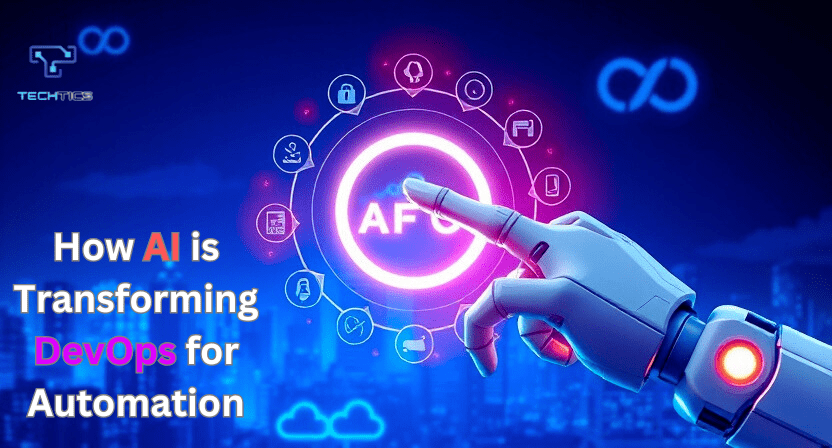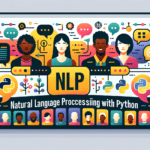Artificial Intelligence (AI) has emerged as a powerful tool for accelerating and automating processes in DevOps, the fusion of development and operations aimed at faster software delivery, high efficiency, and quality. Integrating AI into DevOps isn’t just a trend; it’s redefining how teams manage tasks like testing, deployment, monitoring, and incident response, creating a paradigm shift in how software development lifecycles are managed. This article explores how AI transforms DevOps by enabling faster delivery, increased automation, enhanced insights, and reduced human error.
AI Role in Devops Automation
Automating Routine Tasks and Enhancing Efficiency
One of the primary ways AI enhances DevOps is by automating repetitive, labor-intensive tasks that can slow down workflows. DevOps pipelines involve various routine tasks, such as code testing, deployment, and monitoring, that can become bottlenecks without automation. AI-based systems can automate these steps, enabling continuous integration and continuous deployment (CI/CD) with minimal human intervention.
For example, AI-driven automation tools can automatically detect code changes, initiate tests, and deploy applications across different environments. By handling these repetitive tasks, AI frees up developers and operations teams to focus on higher-value work, like feature development and optimization, instead of dealing with mundane yet crucial tasks.
Intelligent Code Testing with AI
Testing is an essential part of DevOps, ensuring that code changes do not introduce bugs or compromise system stability. Traditional testing methods are time-consuming and can delay deployments. AI enhances code testing by using machine learning algorithms to intelligently identify areas of the codebase that require testing. This process, known as test impact analysis, reduces testing time by focusing on the parts of the code most likely to affect the software’s functionality.
In addition, AI-powered test automation tools can detect patterns from previous tests to anticipate and prioritize new ones, which helps to reduce the number of redundant tests. By optimizing testing in this way, AI accelerates the DevOps pipeline and reduces the time it takes to bring new features and updates to market.
Advanced Monitoring and Anomaly Detection
Traditional DevOps monitoring often relies on predefined thresholds and rules to detect issues, which can result in missed or late detections. AI enables more advanced monitoring techniques that use real-time data to recognize patterns and identify potential issues before they become critical. Machine learning models, for instance, can analyze data from logs, performance metrics, and network traffic to detect anomalies that may indicate performance degradation, security breaches, or system failures.
Through anomaly detection, AI-powered monitoring tools can provide early warnings and insights that enable DevOps teams to address potential problems proactively. This proactive approach minimizes downtime, improves system stability, and ensures a smoother user experience, which is particularly crucial in industries where system reliability is essential.
Predictive Analytics for Incident Management
Incident management and response can be one of the most challenging aspects of DevOps, especially in large-scale systems. AI’s predictive analytics capabilities allow DevOps teams to foresee and address issues before they occur. By analyzing historical data and system performance trends, AI models can identify patterns that indicate an increased likelihood of failure or degradation.
For instance, if an AI model detects that memory usage spikes often precede system slowdowns, it can alert the DevOps team to add additional resources or implement preventive measures before the slowdown occurs. This kind of predictive maintenance significantly reduces the time and cost associated with system outages and allows for a more stable, responsive DevOps environment.
Enhanced Collaboration and Communication
AI tools in DevOps can streamline communication and collaboration by providing centralized, data-driven insights that make it easier for teams to work together efficiently. By aggregating data from various stages of the development pipeline, AI enables cross-functional teams to visualize and track progress, making it easier to coordinate efforts and make data-informed decisions.
AI-powered chatbots, for example, can facilitate communication between team members by providing status updates, responding to common questions, and offering troubleshooting tips. Additionally, Natural Language Processing (NLP) capabilities allow these bots to analyze and summarize lengthy logs or documentation, making key information readily available to all team members.
Continuous Feedback and Improvement with AI
AI-driven insights help DevOps teams not only react to current issues but also improve future workflows through continuous feedback. Machine learning models can process vast amounts of data from past deployments and analyze them to identify areas of improvement. By providing insights into which processes are working well and which could be optimized, AI enables teams to iteratively improve their workflows.
In agile environments, where rapid iteration is essential, AI’s ability to provide continuous feedback is invaluable. For instance, if an AI tool detects that certain code changes consistently lead to bugs, it can recommend preventive measures for future releases, helping developers avoid those pitfalls. This kind of intelligent feedback loop creates a more streamlined, optimized DevOps pipeline over time.
Accelerating CI/CD Pipelines with AI
Continuous integration and continuous delivery (CI/CD) are at the core of DevOps, but optimizing these pipelines can be challenging. AI accelerates CI/CD pipelines by automating code validation, selecting appropriate test cases, and even deciding when and where to deploy new releases. Advanced AI algorithms use historical data to determine the best deployment times, reducing the risk of downtime and minimizing user disruption.
In addition, AI can help prioritize features or bug fixes that have the highest impact, allowing DevOps teams to focus on what matters most to users. By aligning CI/CD processes with real-time data and user needs, AI helps to create a more efficient pipeline that delivers value to users faster.
Reducing Human Error and Enhancing Security
One of the common causes of security vulnerabilities and system failures in DevOps is human error. Whether it’s misconfigured settings or an overlooked step in the pipeline, these errors can lead to costly downtime and security risks. AI minimizes the likelihood of human error by automating processes and performing complex tasks that would otherwise require manual input.
For instance, AI-powered configuration management tools can ensure that settings across environments remain consistent, reducing configuration drift—a common source of security issues. Furthermore, AI-based security tools can continuously monitor for potential vulnerabilities, performing vulnerability assessments and alerting teams when a risk is detected. This approach not only strengthens security but also ensures compliance with industry standards, an essential factor in regulated industries.
Conclusion
AI’s integration into DevOps is accelerating digital transformation, enhancing efficiency, and reducing time-to-market for software and updates. By automating routine tasks, intelligently testing code, proactively managing incidents, and providing continuous feedback, AI is redefining how DevOps teams work. The result is a more streamlined, resilient DevOps environment that can respond quickly to market changes and deliver higher-quality software at a faster pace.
As AI capabilities continue to evolve, we can expect even deeper integration within DevOps, potentially leading to fully autonomous DevOps processes that require minimal human oversight. In this AI-enhanced DevOps landscape, organizations have the opportunity to innovate faster, deliver superior customer experiences, and maintain a competitive edge in an increasingly digital world.




